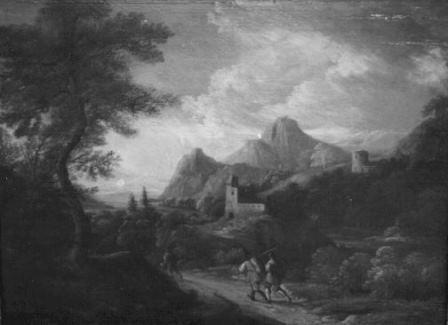The procedure
For the background to this case, the Committee refers to its recommendation dated 18 May 2004 regarding an application by M.M. for the restitution of four works of art from the De Vries estate (RC 1.18). This recommendation advised the restitution of three of the works belonging to the NK collection and the rejection of the restitution application for NK 3072 due to lack of evidence. The applicant is now requesting that recommendation RC 1.18 in so far as it applies to NK 3072 be revised, based on new information.
The Committee also refers to case RC 1.27 in which another De Vries family member (originally) applied for the restitution of essentially the same works from the De Vries estate on 7 February 2005. In connection with this, the Committee has conducted a preliminary investigation into aspects pertaining to the law of succession, which determined that neither the applicant in the RC 1.27 case nor M.M. is De Vries’ heir. The application in the RC 1.27 case regarding the works of art belonging to De Vries was subsequently withdrawn on 31 October 2006. The preliminary investigation determined that M.M. is the rightful owner of the works of art from De Vries estate in the NK collection, in so far as they were to be returned (see consideration 1).
The Committee saw sufficient reason for processing the application dated 6 September 2006 by M.M. and subsequently instituted a fact-finding investigation, for which it also obtained art-historical advice from the Netherlands Institute for Art History (RKD). The applicant explained his claim in person at a hearing on 11 June 2007.
To support his claim and identify the works of art lost by De Vries, the applicant referred to evidence he had sent previously to the Committee in RC 1.27. This includes a notebook with descriptions of 16 paintings that (partially) match those NK works of art whose restitution is being requested, but the status of which was unclear. Taking into account the importance of this notebook for the claim in question, the Committee requested Mr T. van Ruiten, managing director of the National Museum of Education in Rotterdam and handwriting expert, to examine the notebook. He concluded that the notebook contains two different specimens of handwriting. The first belongs to someone who was educated in the period from 1930-1960 and the second to someone who had his written education in the period from 1970 to the present. Based on the above, the Committee deems that only those statements written using the first handwriting style in the notebook have any evidential bearing on the identification of the works from the De Vries estate.
The Committee handled the application for restitution of NK 2256 in its recommendation of 12 March 2007 together with a second restitution application for NK 2256 (RC 1.42). For the considerations that led to the rejection of M.M.’s application, the Committee refers to considerations 14-17 in the above recommendation RC 1.42.
NK 2727 and NK 1756 are also part of the application for restitution RC 1.90, which is yet to be handled. In reference to considerations 5-7, the Committee has found no reason to uphold the recommendation until RC 1.90 has been considered.
A draft report of the results of the Committee’s fact-finding investigation was sent to the applicant for comment on 27 April 2007. The results of the examination of the handwriting in the notebook were also sent to the applicant on 4 May 2007. For the facts in this case, the Committee refers to its investigatory report dated 1 October 2007, which is considered an integral part of this recommendation, as well as to the investigatory reports in the RC 1.18, RC 1.27 and RC 1.42 cases.
